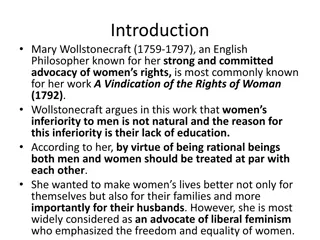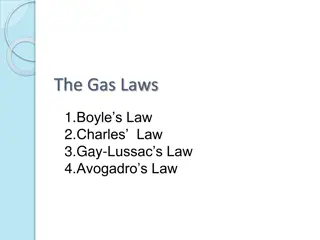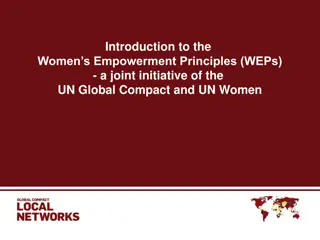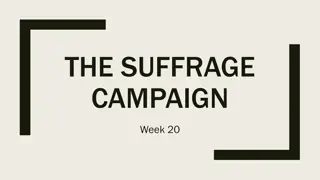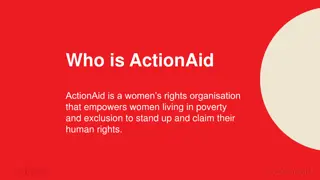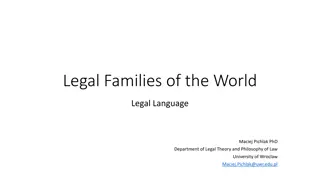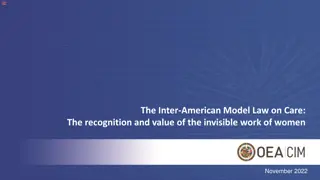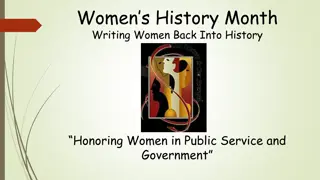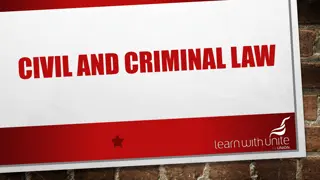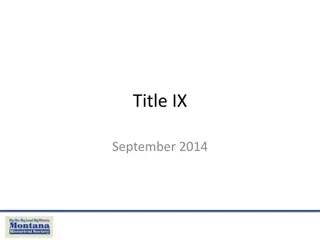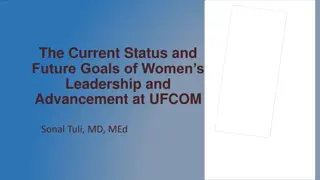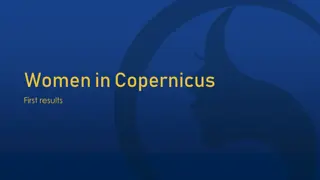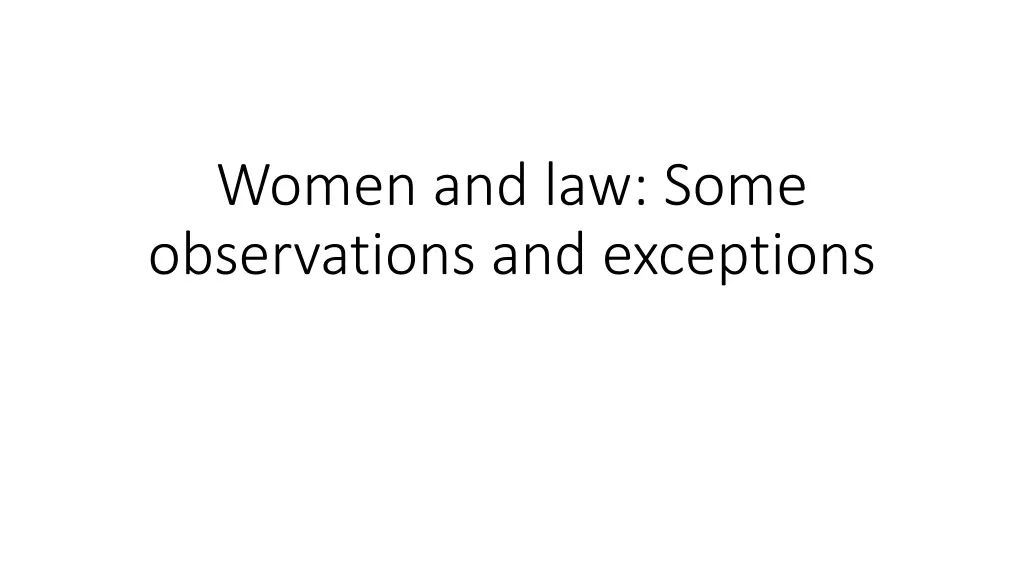
Women and Law: Empowering Through Legal Reform
Explore the complexities of women's legal rights, challenges, and strategies for empowerment in a diverse society. From questioning patriarchal biases to advocating for gender-just laws, this insightful analysis delves into the intersection of law and women's emancipation.
Download Presentation

Please find below an Image/Link to download the presentation.
The content on the website is provided AS IS for your information and personal use only. It may not be sold, licensed, or shared on other websites without obtaining consent from the author. If you encounter any issues during the download, it is possible that the publisher has removed the file from their server.
You are allowed to download the files provided on this website for personal or commercial use, subject to the condition that they are used lawfully. All files are the property of their respective owners.
The content on the website is provided AS IS for your information and personal use only. It may not be sold, licensed, or shared on other websites without obtaining consent from the author.
E N D
Presentation Transcript
Women and law: Some observations and exceptions
Woman and Law: Some Problems There is no homogeneous category of woman We cannot assume commonality of all female experience or life- patterns There is no singular gender identity independent of class, caste Gender is socio-culturally shaped and moulded Categories of class, caste/ race, sexual orientation are all determinants of identity Therefore heterosexual desire and its culmination in marriage cannot be naturalised as a norm across all segments of society
How can we make law an instrument of womens emancipation and empowerment? By questioning its patriarchal biases By ensuring that its cultural biases do not skew its judgements and delivery mechanisms By questioning previously existing legal systems which have codified existing power equations and prejudices in society Examples of this will be Manusmriti and Khap Panchayats
How do we ensure that law sub-serves the cause of justice in a fundamentally gender-unequal society From a feminist perspective, 3 broad possibilities can be indicated: First is to work on legal reform to make laws gender-just at times this is a contentious issue in a diverse and heterogeneous society At times there is conflict between the gender just laws and the norms of religious communities-the Shah Bano case brought this up It was felt that while some communities had reformed laws, others had not. However, attempts to introduce a Uniform Civil Code met with resistance from several quarters
The second position would be to mobilise opinion and create mass movements in order to change laws. We can observe that the Nirbhaya rape case led to a scrutiny of and changes in the rape laws in India Similarly, the PCPNDT Act was instituted when India s skewed sex- ratio was brought up in international fora Third point is to seek appropriate state intervention, recognising that law as a tool of social reform has only limited efficacy, given the social structures, ideologies and traditional division of labour within the household
The way forward So are laws significant for women? How can we ensure that laws are not just gender-neutral but gender-just, so that it provides checks and balances to operations of patriarchal power Following from the last slide, we need to use law to address the inequaities and problems within judicial void of private spheres of family and sexuality to move towards women empowerment In the long term, we have to ensure that education is not just literacy- driven, but that it plays a transformative social role.



